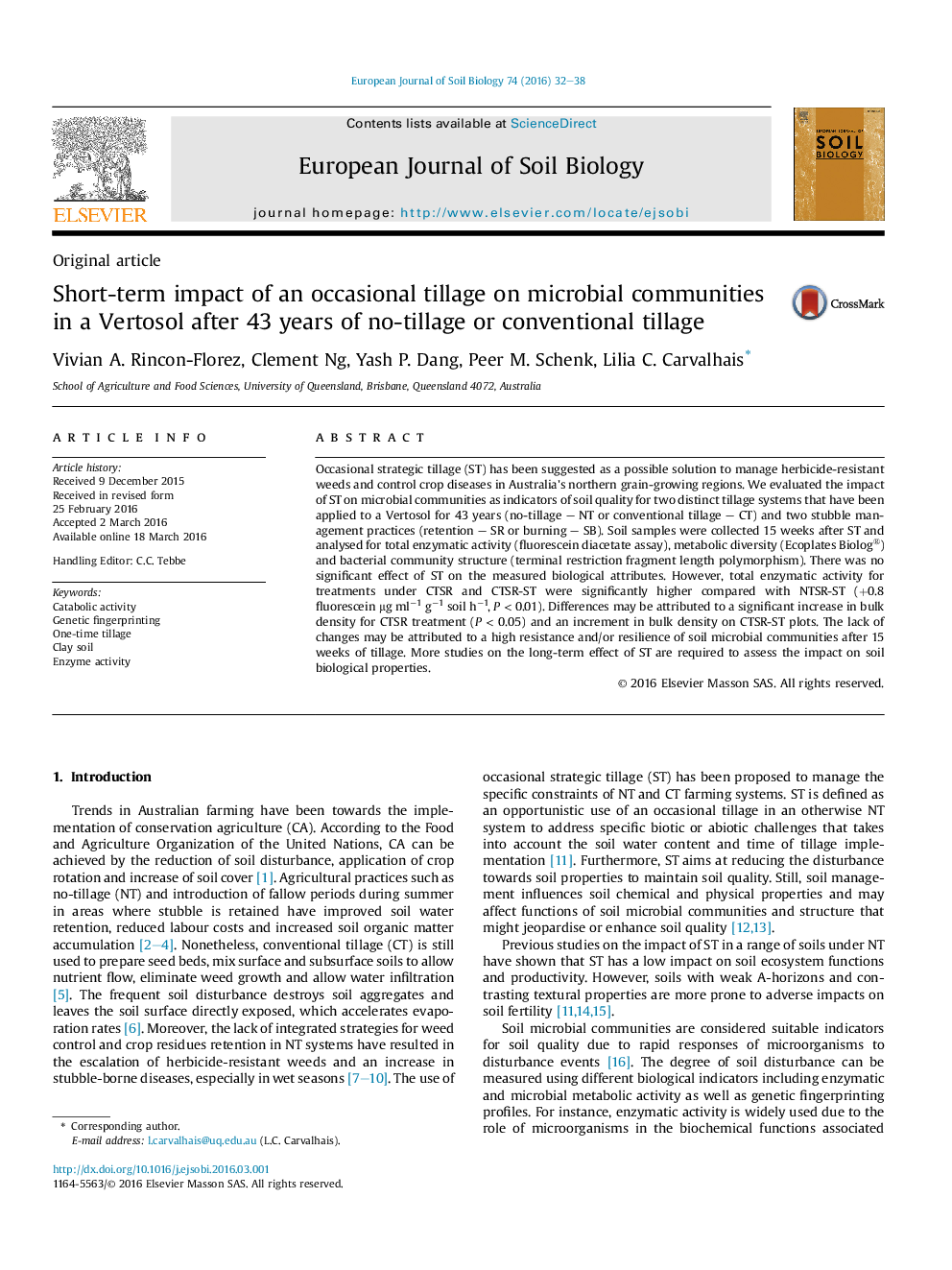| Article ID | Journal | Published Year | Pages | File Type |
|---|---|---|---|---|
| 4391697 | European Journal of Soil Biology | 2016 | 7 Pages |
•Effect of strategic tillage on soil quality was assessed via microbial communities.•Measured bioindicators were not affected after 15 weeks of strategic tillage.•Lack of changes may be attributed to high microbial resilience and/or resistance.
Occasional strategic tillage (ST) has been suggested as a possible solution to manage herbicide-resistant weeds and control crop diseases in Australia's northern grain-growing regions. We evaluated the impact of ST on microbial communities as indicators of soil quality for two distinct tillage systems that have been applied to a Vertosol for 43 years (no-tillage – NT or conventional tillage – CT) and two stubble management practices (retention – SR or burning – SB). Soil samples were collected 15 weeks after ST and analysed for total enzymatic activity (fluorescein diacetate assay), metabolic diversity (Ecoplates Biolog®) and bacterial community structure (terminal restriction fragment length polymorphism). There was no significant effect of ST on the measured biological attributes. However, total enzymatic activity for treatments under CTSR and CTSR-ST were significantly higher compared with NTSR-ST (+0.8 fluorescein μg ml−1 g−1 soil h−1, P < 0.01). Differences may be attributed to a significant increase in bulk density for CTSR treatment (P < 0.05) and an increment in bulk density on CTSR-ST plots. The lack of changes may be attributed to a high resistance and/or resilience of soil microbial communities after 15 weeks of tillage. More studies on the long-term effect of ST are required to assess the impact on soil biological properties.
